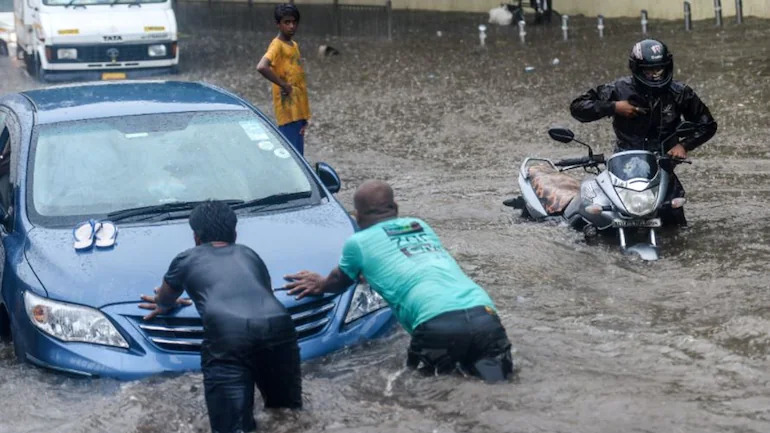
80% of South Mumbai will get submerged by 2050: Municipal chief

A major portion of Mumbai city – the nation’s financial capital – will go under water by 2050, declared Mumbai municipal commissioner Iqbal Singh Chahal on Saturday (August 28) as he quoted scientific reports to suggest that climate change will make sea levels rise to an extent that several areas, like Nariman Point and state secretariat Mantralaya, will be submerged.
“We are getting warnings from nature and if we do not wake up, it will be a dangerous situation for the next 25 years. And it will not only be the next generation but the current generation will also suffer,” said Chahal while speaking at the launch of Mumbai Climate Action Plan and its website, an event attended by Maharashtra environment and tourism minister Aaditya Thackeray.
Why Mumbai is under threat?
Mumbai, which lies on the west coast, has witnessed four deadly cyclones since 2020. The Arabian Sea has been calmer than the Bay of Bengal in the sense that it faces fewer and weaker cyclones. However, the trend has been changing as the mean temperature of Arabian Sea touches 30 degrees Celsius. Cyclone Nisarga hit Mumbai in 2020, the first time in 129 years. In the last one and a half years, three more cyclones hit the Maharashtra capital. “On August 5, 2020, about 5 to 5.5 feet water was accumulated at Nariman point. There was no cyclone warning that day, but considering the parameters, it was a cyclone,” Chahal said.
The Mumbai commissioner said that climate change is no longer something that happens in the Himalayas and causes glaciers to melt. “It has now come to our doorstep,” he warned, adding that climate change will result in flooding in about 80 per cent of Cuffe Parade, Churchgate, Nariman Point, Umarkhadi, Mohammad Ali Road, Marine Lines, Girgaon and Breach Candy in the next 25-30 years.
Data provided by automatic weather stations in the past decade tells that on an average, Mumbai has seen six heavy, five very heavy, and four extremely heavy rainfall days per year. Of all the rain Mumbai gets in monsoon, about 10 per cent falls under the heavy category, nine per cent very heavy, and six per cent extremely heavy.
Not everyone believes Mumbai will go under water by 2050
In 2019, the then Earth Sciences Minister Harsh Vardhan told Rajya Sabha that Mumbai does not face the threat of getting submerged by 2050 due to climate change.
Also read: How can you help fight climate change? Don’t waste food, try upcyling
Vardhan told the Upper House that India’s scientists had been recording sea level rise in the country since 1876 and computed the average sea level rise to be 3.3 cm by 2050. “Whatever we are saying is based on the report of our own scientists and our own institutions that are producing the data, which are rated the best in the whole world by everyone. There is no reason to worry about Mumbai. Whatever data I have given are the long-term data. Mumbai is not going to be submerged,” he had said then.
The Mumbai Climate Action Plan
Mumbai is among the 40 cities in the world (C-40), and fifth in India, which are taking bold, urgent action to secure the future of people and the planet. Chahal said that Mumbai was the only one in South Asia right now that was in the process of formulating a climate action plan and acting on it.
The Mumbai Climate Action Plan’s main objective is to create a comprehensive strategy to tackle the challenges of climate change by adopting inclusive and robust mitigation and adaptation strategies.
The plan aims to identify vulnerable communities that are most impacted by the effects of climate change and to increase resilience by introducing sector-specific strategies for mitigation and adaptation.
The Mumbai Climate Action Plan includes:
- Highlighting demographic data and defining socio-economic and ecological features of the city of Mumbai
2. Creating a ‘climate profile’ of the city
3. Conducting in-depth sector analysis across six key sectors
4. Setting tangible emission reduction goals for Mumbai
5. Developing actions and implementation strategies


